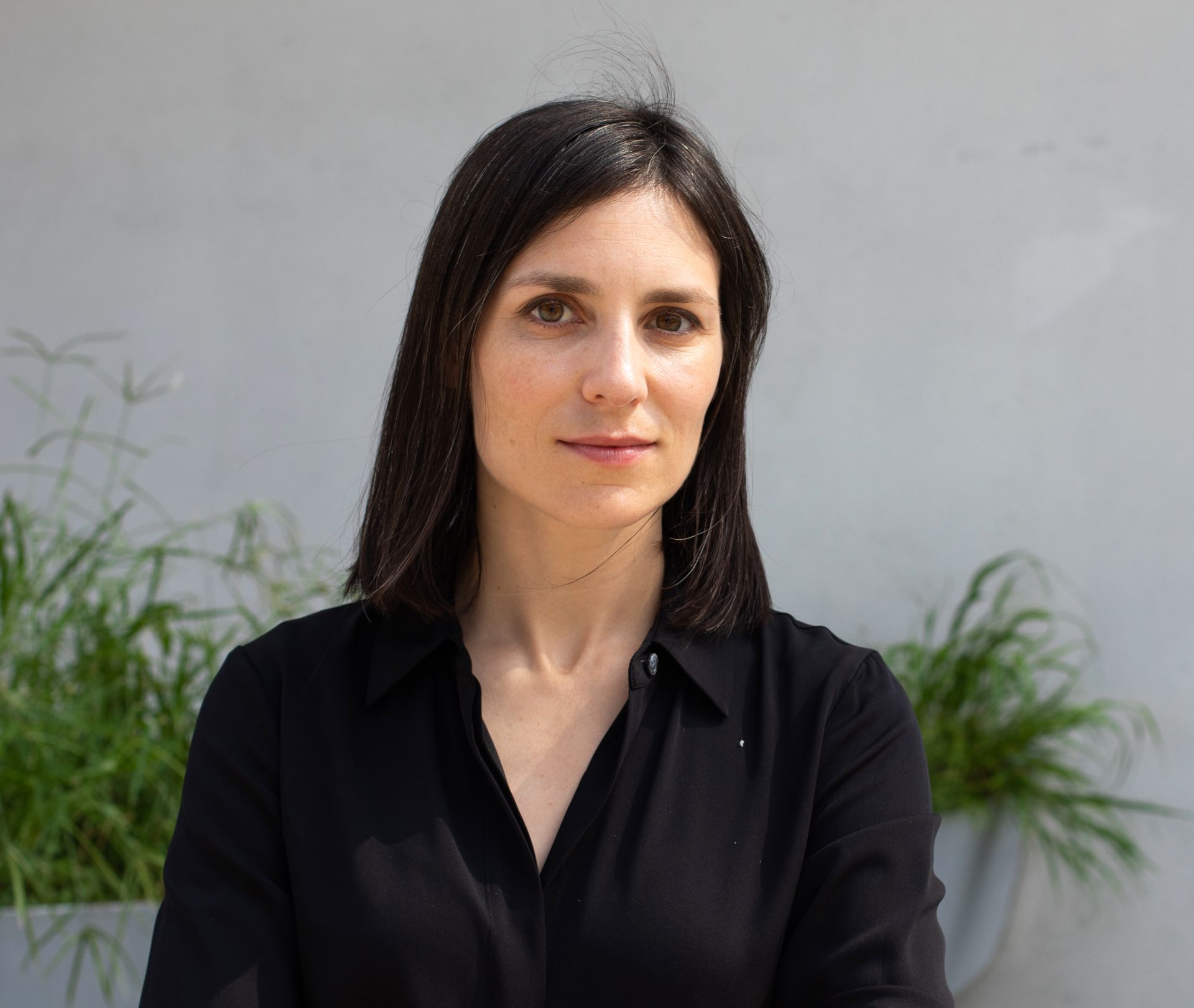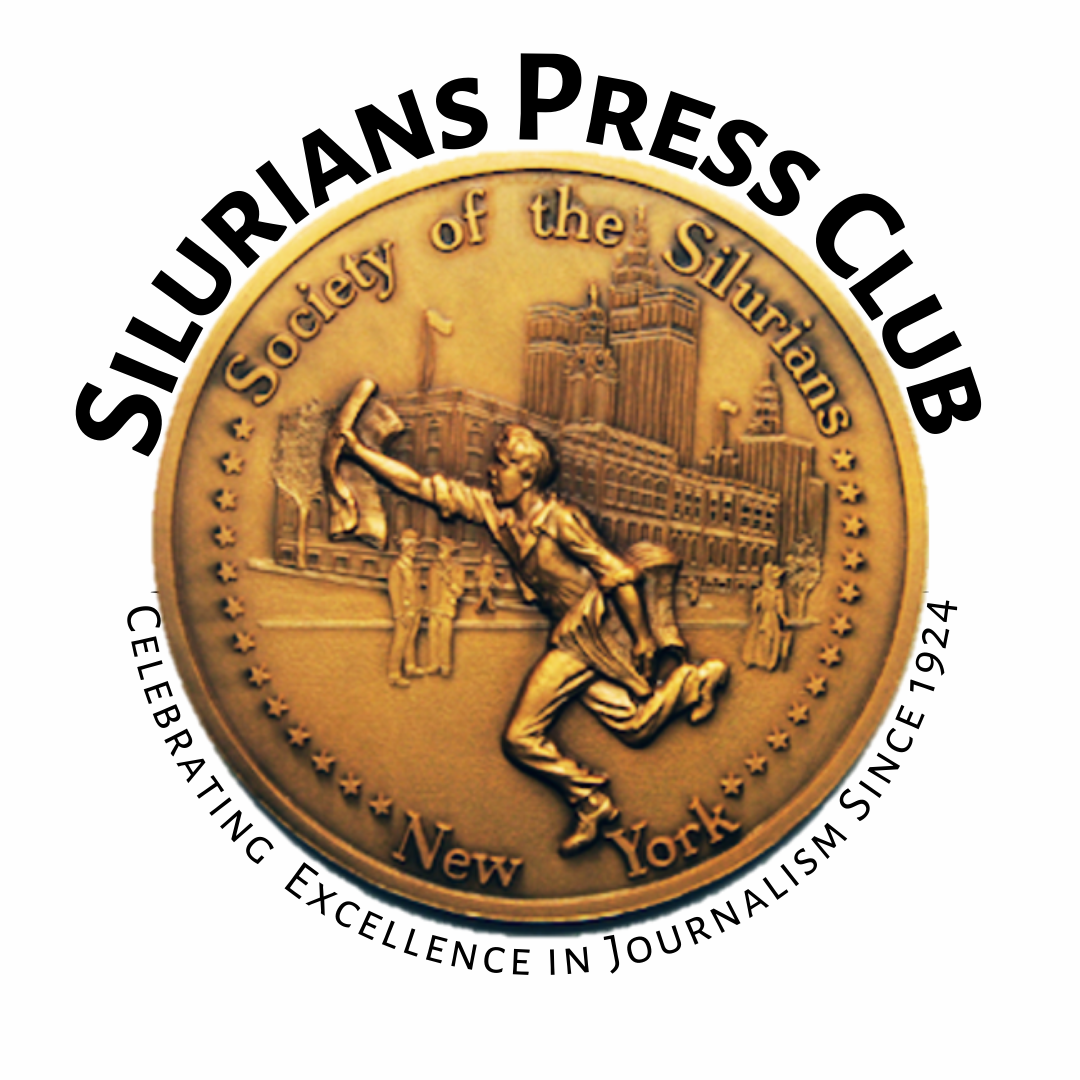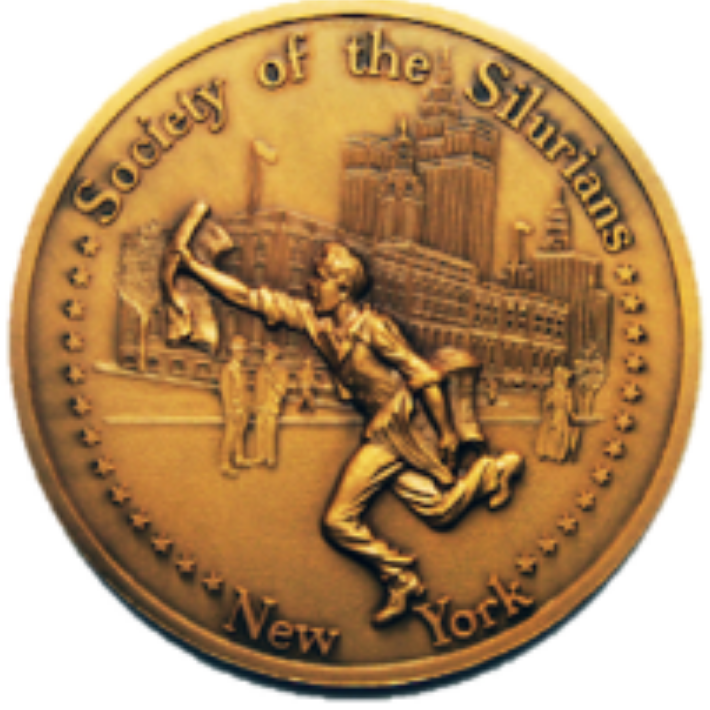
Bianca Bosker
Bianca Bosker talks about "Get the Picture," her hilareous expose of the contemporary art scene.
By Mel Laytner
What is art?
Journalist Bianca Bosker tackled this question head-on, or more accurately, head-first, diving deep and emerging with Get the Picture, a rollicking expose of New York’s contemporary art scene.
Offering sharp humor and sharper insights, Bosker shared her experiences in a wide-ranging conversation with the Silurians own Betsy Ashton, herself a successful fine artist, at the club’s Feb. 19 luncheon catered, perhaps ironically, by the National Art Club.
“For most of my adult life, art and I were not on speaking terms,” Bosker said. Wandering through galleries and museums, she recalled she felt“at least two tattoos and a master’s degree away from figuring out” what she was seeing.
This led her to withdraw from art entirely, a retreat she now calls “the coward’s way out.”
A turning point came in the family attic with the discovery of paintings of “dancing carrots” by her late grandmother, a Holocaust survivor, created for children in a displaced persons camp after the war.
"She was not an artist," Bosker said, "but she turned to art when life turned itself inside out." This led Bosker to question her own distance from the art world and ultimately inspired her headfirst deep dive.
Years of hands-on research followed: painting walls as a gallery assistant in Brooklyn, learning the art of selling art in Miami, months as an artist’s assistant, working as a guard at the Guggenheim, and even participating in performance art where an “ass influencer” sat on her face.
When she began her research, however, Bosker “faced waves of opposition. I had threats, insults. People told me that my whole idea of trying to get into the art world, working it, and then write about what I learned was impossible, maybe even dangerous."
This only piqued her journalistic curiosity. "The more people warned me to stay away," Bosker said, "the more determined I became.”
Once inside the door, she discovered the "strategic snobbery" used to keep outsiders—the “Joe Schmoes”—at bay.
One tool is “art speak”, where "work isn't sold; it's placed" and fingerpainting is referred to as "indexical marks of the artists."
“The trick,” Bosker quipped, "is to sound like a French professor who's been the victim of a terrible translation job."
Another prevalent tool is "context," knowing about the artist (academic CV, reputation, the gallery or institution presenting the work, opinions of curators and critics) rather than expressing serious appreciation of the artwork itself.
“Art-speak” and “context” are effectively deployed by “the Heads,” influential gallerists and curators who effectively decide what art is worthy of attention, often with little transparency and considerable self-interest.
"These gatekeepers become so much more important if we're told that we need years of going to art fairs, familiarity with artists’ bios, the right pair of jeans to commune with a painting,” Bosker said. “I felt like I was being encouraged to outsource my eye to the hive mind.”
Then there’s the complex interplay of money, influence, and taste.
Bosker recalled one revealing incident while working in a gallery. A group of art patrons toured the gallery with a museum curator. One patron returned later and purchased two copies of the same photograph, one for the museum’s collection, the other for their personal collection.
To Bosker, this seemingly innocuous act revealed the intricate dance between philanthropy, insider trading, and market manipulation: By donating pieces to a museum, patrons may also increase the value of their own holdings.
One of Bosker’s most rewarding experiences was working as an artist’s assistant with Julie Curtis just as Curtis was transitioning from an "emerging" artist to one whose work was suddenly fetching “six figures” at secondary market auctions.
While seemingly a good thing for the artist, some art world cognoscenti viewed Curtis’s success with suspicion because “high prices can be seen as in bad taste. They can be seen as too commercial. They can taint an artist… that, yes, she's too hot. There is a herd mentality very much in the art world."
Bosker credits working with Curtis with teaching her to see art from the perspective of the creator and the work itself, rather than the “context” neatly typed on labels affixed to nearby walls.
Another stunning experience in Bosker’s evolution was her encounter with Mandy AllFIRE, a performance artist with thousands of Instagram followers as an "ass influencer" – sitting on people’s faces while being simulcast on social media.
The reality of the performance was shocking: A man, naked except for leopard-print briefs, was lying on the floor as Mandy, clad in black lace lingerie, sat on his face, "sort of gently bouncing like a decerning mattress shopper testing the merchandise."
Nevertheless, Bosker found herself volunteering for the performance.
That experience led her to ponder the question "what is art?" more profoundly. Ultimately, Bosker moved away from a rigid definition, embracing instead the idea of art as a form of communication and experience.
"The closest that I can come to a definition," she offered, "is that it's kind of a handshake between a creator and the viewer."


